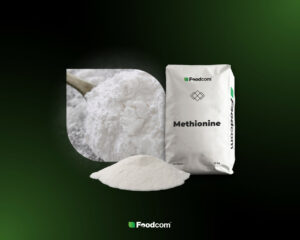- The rise in methionine prices means rising costs for the agriculture and livestock industries, as methionine is an important component of animal feed.
- The logistical problems of citric acid highlight the far-reaching impact of infrastructure disruptions on the food industry supply chain.
- The increased demand for taurine illustrates the growing importance of the substance for the healthcare sector, whereby logistics problems can lead to a price increase.
Hello Partners!
Welcome back to our Newsletter!
Discover the latest market and price trends in the chemical industry for March 2024! From key feed ingredients and amino acids to base materials for the food industry and materials essential to the pharmaceutical and automotive sectors, find out how prices are changing and what challenges and opportunities this presents for different industries. Find out how global events and changes in demand are affecting markets from Europe to Asia. Read an overview that highlights the market dynamics at the beginning of 2024.
Let’s take a look at what else is happening on the market!
Products of the Week!
Methionine
The market for Methionine shows a positive upward trend in the period from March to April 2024. The price of methionine rose by 11.88% during this period. This is an interesting development for the industry, especially as Methionine is an important amino acid for animal feed and its price can influence production costs in agriculture and livestock farming.
Tryptophan
The Tryptophan market has experienced slight price fluctuations. The overall trend indicates a slight decline, which may be related to various market factors, such as a change in demand in the food and supplement industry, where tryptophan is used, or changes in production costs and availability of raw materials. Although the percentage change is not large, it is important to know how these fluctuations can affect the long-term purchasing and inventory strategies of companies.
Lysine
In March/April 2024, the Lysine market experienced an initial price decline, but quickly reversed this trend and saw a gradual increase. Feed producers may need to rethink their purchasing strategies in light of the price development, while for livestock farmers this increase may mean adjusting their feed budgets.
Citric Acid
Citric Acid prices rose significantly in March and are expected to rise further in April. This is mainly due to the collapse of the Francis Scott Key Bridge in Baltimore, which disrupted the supply chain and closed the port, affecting availability and logistics costs. The shift of business to other ports, such as Los Angeles, could affect transportation and logistics in the long term, just as the rising cost of Corn, the raw material for citric acid, is driving up prices.
Vitamin C
The end of the peak season for illness is often accompanied by less interest in supplements to support the immune system, which could explain the observed stabilization of Vitamin C prices. After a period in which the demand for Vitamin C increased due to its health-promoting properties, the market is now adapting to the new normal, in which demand is returning to its normal level.
Xanthan gum
The market for Xanthan Gum is currently experiencing an upward trend in prices. This increase may be due to a number of factors, such as the increasing use of Xanthan Gum as a stabilizer and emulsifier in the food, cosmetics and pharmaceutical industries, as well as possible supply shortages of this raw material.
Keratin
Recently, the price of Keratin has risen slightly, which has important implications for feed manufacturers. As a valuable protein component, Keratin is used to enrich animal feed, especially where supplementation with sulfur-containing amino acids is required. This moderate increase can have an impact on the cost of feed formulation, forcing producers to rethink their protein composition to balance nutritional value and cost efficiency.
Taurine
Taurine prices rose globally in March, fueled by increased demand from the nutraceutical and healthcare sectors and a rise in the cost of the raw material ethylene oxide. Production recovered in China, the US and India, which contributed to increased demand for taurine. In addition, the collapse of the Francis Scott Key Bridge and the closure of the Port of Baltimore could affect taurine logistics in the US and lead to a potential price increase. Taurine prices are expected to continue to rise due to continued demand and limited supply.
What else?
In March 2024, aniline prices in Europe rose by 1%, driven by increased demand from Asia for dyes and pigments. Although industrial production in the eurozone slowed, benzene feedstock prices were boosted by more expensive Brent crude oil. A decline in production costs for nitric acid and stable demand from the MDI industry supported aniline prices. The aniline price in Hamburg reached 1440 $/MT. Aniline prices are expected to rise in Q2 2024, mainly due to the limited availability of benzene and the impact of OPEC+ oil production cuts.
In March 2024, ethylene prices on the European market fell due to weak demand and improved supply. Reduced interest from the polyethylene industry and limited activity on the spot market contributed to the price decline. Despite the rise in oil prices, this did not lead to an increase in ethylene prices on the domestic market. The price decline was supported by improved raw material availability and lower freight costs. In Germany, ethylene prices reached 870 USD/MT, a decrease of 80 USD/MT. Ethylene prices in Europe are expected to fall further, although high kerosene prices could provide some price support.




![Methionine market review 2025 [Global Report] Methionine market review 2025 [Global Report]](https://foodcom.pl/wp-content/uploads/2024/04/Global_Report_2023_Methionine_Market_Overview_Foodcom-300x150.jpg)



